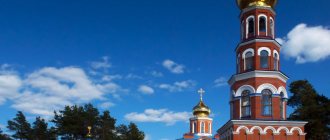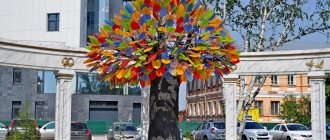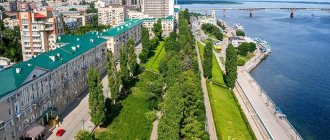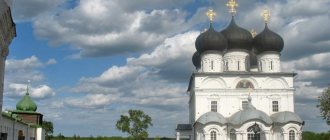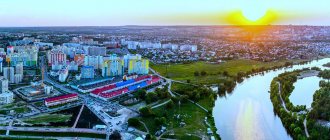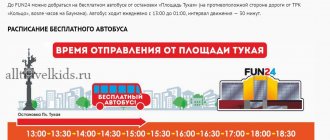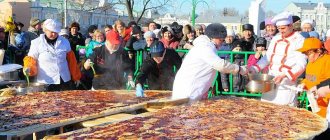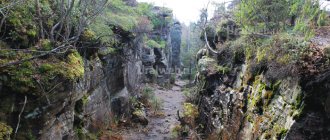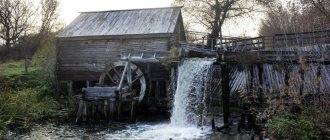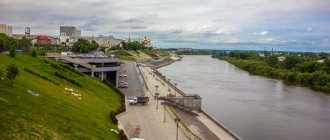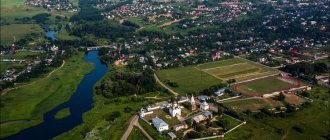Cities near Penza
| City | A country | Distance |
| Kuznetsk | Russia | 122 km |
| Saransk | Russia | 148 km |
| Saratov | Russia | 225 km |
| Engels | Russia | 244 km |
| Balashov | Russia | 266 km |
| Sizran | Russia | 254 km |
| Balakovo | Russia | 306 km |
| Tambov | Russia | 294 km |
| Ulyanovsk | Russia | 378 km |
| Arzamas | Russia | 313 km |
| Tolyatti | Russia | 351 km |
| Michurinsk | Russia | 365 km |
| Dimitrovgrad | Russia | 460 km |
| Moore | Russia | 473 km |
| Novokuibyshevsk | Russia | 447 km |
| Samara | Russia | 422 km |
| Nizhny Novgorod | Russia | 421 km |
| Dzerzhinsk | Russia | 439 km |
| Kamyshin | Russia | 401 km |
| Cheboksary | Russia | 464 km |
You can see where Penza is located on a map of Russia using this link.
Source
Automobile highways
Four federal highways pass through Penza:
- M5 "Ural" is a federal highway that passes through Samara, Moscow, Ufa, Orenburg, Yekaterinburg, and Chelyabinsk. Part of the Asian route AH7. The total length of the highway is 1879 km. The road surface is asphalt.
- P208 is a highway that has the status of a federal highway. The total length of the road is 358 km. The route originates in Tambov and passes through Kirsanov, Rasskazovo, Kamenka, Belinsky. The final destination of the road is Penza. The road surface of the route is asphalt.
- P158 is a federal highway. The total length of the highway is 611 km. The road originates in the city of Nizhny Novgorod and passes through Penza, Issa, Arzamas and Saransk. The final destination of the road is Saratov. The road surface is asphalt.
- The E30 is a European route that passes through the UK. The road originates in the city of Cork, Ireland. The route crosses the following countries: Poland, Russia, Germany, the Netherlands, Ireland. The total length of the highway is 5,800 km. The final point of the route is the city of Omsk.
Where is Penza in Russia?
Where is Penza? How far is the city from Moscow? What is interesting about Penza and how to get to it? More on this later in the article. Penza is located 629 kilometers from Moscow. The city is located on the bank of the left tributary of the Sura River (Penza River).
The article tells about where Penza is located, about the history of the regional center, which celebrated its 350th anniversary in 2013. Sights that attract history buffs will also be considered.
45189773285_4c2044d858_h.jpg
Lermontovo State Lermontov Museum-Reserve "Tarkhany" is a unique historical and cultural monument of national importance. Half of the life of the great Russian poet, writer and playwright Mikhail Lermontov passed here. Here, in the noble estate environment, the diversity of folk life, in communication with nature, with the riches of his native language, he received indelible impressions. Here are the origins of his attitude and character, and of many of his creations. The poet’s ashes also rest here. The Tarkhans entered the poet’s destiny as the most precious, best and kindest, as the most precious particle of great Russia, which he loved strongly, passionately and tenderly. New Year's performances, round dances, competitions and quizzes, master classes, interactive classes, horseback riding in a snow-covered garden, as well as excursions to museum exhibitions where you can learn new things about Mikhail Lermontov - all this on New Year's weekend in Tarkhany.
History of the formation of Penza
To protect the territory of the Russian state from external enemies, in 1663, at the direction of the second Russian Tsar from the Romanov dynasty, Alexei Mikhailovich the Quiet, a governor arrived on the Penza River with a hundred Circassian Cossacks to build a fortress. The plan for the defensive structure was developed by Lieutenant Colonel Osip Zumerovsky. The latter continued to lead the construction.
The total length of the Kremlin’s defensive walls was more than 950 meters, and a settlement of people called upon to perform military or administrative service grew around them. Responsibilities for creating a settlement nearby were assigned to the first Penza governor Elisey Lachiny.
At that time, the established settlement numbered approximately 3,300 people. The fortress was attacked several times, but the city was not conquered.
In gratitude for the protection of Russia's borders on the southeastern side, the Tsar presented Penza with an icon of the Kazan Mother of God. It has survived to this day and is now the main shrine of the city among the Orthodox.
In the middle of the 18th century, the Kremlin ceased to fulfill its strategic function. And after some time, the region became one of the largest in Russia in the production of agricultural products.
In 1801, Penza received city status. Then it became the main city of the Penza district.
From this year, the city infrastructure begins to develop, educational and cultural institutions, industrial and agricultural enterprises are created.
Where is the city of Penza? We'll talk about this in more detail below. Now Penza is a regional cultural center of the Russian Federation with a developed industry, where 530 thousand indigenous people live on an area of 305 km².
The city tourist office organizes daily walking tours for tourists to the main historical sites of the city.
Where is?
Where is the city of Penza? The city is located on the Volga Upland in the central part of Russia. Penza is located 629 km southeast of the Russian capital.
The city coordinates are as follows:
The region borders on the following regions: Saratov (in the south), Ryazan (in the north-west), Tambov (in the west), Ulyanovsk (in the east), and the Republic of Mordovia (in the north).
The following cities are located near Penza (distance is indicated in parentheses):
danshino_4.jpg
Danshino Danshino is an ancient Mordovian village (17th century), located in a picturesque location in the Belinsky district of the Penza region. Here, on the left bank of the Big Chembar River, since the mid-18th century there has been a place for an annual festive gathering for the Holy Trinity. “Paradise” - this is what local residents call their village in the Penza outback. The grounds of the “Paradise Estate” occupy almost 50 hectares: gardens, greenhouses, meadows. Some of the pictures may surprise you: in the middle of a huge field, yaks, camels, deer, llamas and goats are calmly grazing. Nearby are poultry houses with golden eagles, owls, and eagle owls. There are even peacocks and whooping cranes. Danshino is the venue for the large-scale all-Russian ethno-cultural festival “DanshinoFast”.
Cathedral
On the central alley of the Mironositsky cemetery there is the Assumption Cathedral. In 1836, there was a wooden church on this site. 63 years later, during a city fire, it burned down. And in 1905, on the foundation of the burnt temple, a stone cathedral with three altars was built.
In 1937 the cathedral was closed, and for eight years it housed army warehouses. From 1945 to the present time, liturgies and church services have been held in the cathedral. They can be attended by tourists and city guests. Since 2000, a Christian school for children and adults and theological educational courses have been operating on the territory of the Cathedral.
Trinity Convent
We already know where Penza is. But there are still some sights to consider. For example, tourists are wondering where the convent is located in Penza? In the old part of the city it is located on Kirov Street. Its history begins in 1689.
At that time, the priest of the city Nativity Church gave a manor plot for the construction of women's housing to those who suffered from the raids of nomads on the territory of the Penza region.
In 1746, on the site of wooden church buildings, a stone Trinity Church was erected and consecrated in the name of the Smolensk Icon of the Mother of God, and the monastery officially became known as the “Trinity Convent”.
Now tourists have the opportunity to explore two operating stone churches and attend church services. There is a children's Sunday school on the territory of the monastery. There is also a church library here.
Pokrovsky Bishops' Cathedral
Where is the bishop's cathedral located in the city of Penza? On Chkalova Street. Tourists pay attention to the beautiful religious building, which is called the Penza Intercession Bishops' Cathedral.
The first wooden temple structure was built after the formation of the city itself in the Starodragun settlement, in which a voluntary equestrian Cossack squad was formed (now this is the area of Kalinin Street).
In 1680 the temple was burned, but 7 years later it was restored. At that time, the Vladimirov Icon of the Mother of God was preserved in the church, in honor of which another church building was erected nearby.
In 1765, a stone temple was built on the site of these two wooden churches. It has survived to this day. In 1931, city authorities banned church services. Then the temple was closed, and the premises housed a cinema for a long time.
After 58 years, the building was returned to the Penza church leadership. Restoration work began in 1990. In 1998, the cathedral was consecrated, and daily church services began on October 14.
The city of Sputnik and its attractions
Where is Sputnik located in Penza? In the southern part of the city there is the Pervomaisky district (an area of more than 50 km²). It was created in 1979 by annexing several villages located near Penza.
Once upon a time there was a large field and a sand quarry on this site. For 10 years, under the leadership of the regional leadership, construction work was carried out and urban infrastructure was created.
This attraction consists of a complex of three fountains that are controlled by a computer system. In the evening, thanks to the lighting, which changes to the beat of the music, it looks especially attractive. The building is located on Naberezhny Boulevard and is a popular vacation spot for residents and guests of the city of Sputnik.
armievo.jpg
Armievo The whole family can spend the January holidays in a secluded corner of the Shemysheysky district of the Penza region - at the Armievo tourist base. Thanks to its picturesque places and its infrastructure (houses for accommodation, gazebos, a bathhouse, a restaurant), “Armievo” organizes any winter New Year’s leisure to appreciate the winter holiday in all its glory. This is truly the real “Penza Karelia”!
How to get to Penza?
Where is Penza located? We have already found this out. How to get to the city from Moscow? Depending on your financial capabilities, you can get to Penza by choosing one of three options.
You can use the services of airlines. Planes depart from Domodedovo and Vnukovo and land at Bolshoye Savino International Airport 1.5 hours later. The ticket price is approximately 7,000 rubles.
The Moscow-Orsk and Moscow-Penza trains arrive at the main railway station of Penza.
In Moscow, three bus stations (Kazansky, Shchelkovsky, South Gate) send long-distance buses from Moscow to Penza. Travel time is approximately 14-15 hours. Ticket price starts from 1200 rubles.
Exiting the non-working days regime: what awaits Penza after the mini-lockdown
Photo: regional government
The decision was made in the government at a meeting of the operational headquarters
Penza region leaves
from the non-working days regime from Monday. The regional authorities made this decision at a meeting of the operational headquarters. What awaits Penza after the mini-lockdown?
Students will return to school
from the holidays and will begin full-time education, but in compliance with sanitary and epidemiological measures in all educational institutions.
As usual
All kindergartens will start working. This was reported by the press service of the regional government. In addition, it became known that students will continue their studies in a semi-distance format. For all unvaccinated Penza residents who are over 60 years old, the self-isolation regime remains in effect.
Introduced non-working days regime
could significantly impact business in the region. Therefore, touching on this topic, Oleg Melnichenko reported on the measures being prepared to support entrepreneurs in the context of coronavirus restrictions, and on the resumption of the work of the regional headquarters to ensure sustainable economic development.
Despite the introduced in the region
anti-Covid measures, based on the results of Friday, the largest number of new patients with Covid was noted for the entire period of observation. According to the portal stopcoronavirus.rf, the anti-record was 387 cases of infection per day on November 5. Thus, in the Penza region, for the fourth day in a row, the highest incidence rates of COVID-19 appeared (indicators in the previous three days were 381, 382 and 385 people, respectively).
At the same time, the Russian operational headquarters
on the fight against coronavirus updated information on the level of collective immunity that has been achieved in different regions of the country.
This figure has been achieved
including by providing the region with the vaccine itself. Recently, another batch of Sputnik V against coronavirus infection arrived in the Penza region. A total of 58,800 kits of the drug arrived.
Source
danshino_3.jpg
For reference: • State Lermontov Museum-Reserve “Tarkhany”. Penza region, Belinsky district, village. Lermontovo, st. Bugor 1/1, 89374035031 • Nikolsk Museum of Glass and Crystal, Penza Region, Nikolsk, st. Komsomolskaya, 21, (84165) 4-55-24, opening hours: daily from 10.00 to 17.00, except January 7 • Equestrian club "Lukomorye", Penza region, village. Zolotarevka, st. Surskaya, 23a, 8 (8412) 75-26-56. • Paradise estate Danshino, Penza region, Belinsky district, village. Danshino, Lugovaya st. 17B, 89273751695 • Recreation center "Armievo", Penza region, Shemysheysky district, village. Armievo, st. Armyevsky Pond, 89023541915
The largest cities in the Penza region
List of the largest cities in the region by population.
Penza
The story begins in 1663, when a fortress was built at the junction of the Sura and Penza rivers to protect the borders of the Moscow principality from steppe raids. In the 19th century it was the center of the province. During Soviet times, industry developed. Among the well-known enterprises: a bicycle factory, where “Sura” and “Temp” were produced, a watch factory. Our assets include writers, poets and modern celebrities.
Population – 516,450 people (2021).
Kuznetsk
Previously the village of Naryshkino, history since 1699. The city's status and name were obtained by decree of Catherine II in 1780. Famous historical buildings: Church of the Resurrection of Christ (mid-19th century) and Church of the Kazan Icon of the Mother of God. A special place with a source is the chapel of St. Paraskeva the Martyr. Among the modern ones are the “Hill of Glory”, the monument to the “Steam Locomotive”.
Population – 82.3 thousand people.
Zarechny
It has the status of a “closed” city with a special access regime. The instrument-making plant, opened in 1961, is the main enterprise. Now it is an association of Rosatom. On the territory of the city there are archaeological sites: Akhunskoye settlement and Zarechenskoye settlement. Modern monuments: the 18 m high Victory Stella and the memorial to the liquidators of man-made disasters.
Population – 65.2 thousand inhabitants.
Kamenka
City on the Atmis River. History from the beginning of the 18th century. It developed after the construction of the railway in 1877, this is associated with the name of Count V.N. Voeikov. Here, during the war, evacuees and Kommunar fired shells for the front. Sights: Kuvaka spring with mineral water, Count Voeikov's estate, monuments to war heroes.
Population – 39.6 thousand people.
Serdobsk
The small town arose as a settlement on the banks of Serdoba in 1699. In 1780, it received city status by order of Catherine II. This is the birthplace of P. N. Yablochkov, the inventor of the arc light bulb; a monument was erected to him in the central park. In the city center there are mansions in the Art Nouveau and Neoclassical styles and the active Cathedral of St. Michael the Archangel.
Population – 32 thousand people.
Nizhny Lomov
The history dates back to 1636, when a fortress was erected on the Lomovka River, guarding the south-eastern border of the Moscow Principality. In the middle of the 18th century, fair trade developed; caravans passed through the city from different places to the fair in Nizhny Novgorod. City status was obtained in 1780. In the surrounding area there are springs with healing water, they are called Saloleika and are considered holy.
Population – 21 thousand inhabitants.
Nikolsk
City status since 1954. It arose from two villages in 1761, on the banks of the Vyrgan River. In 1764, A.I. Bakhmetev built the first crystal factory in Russia. Crystal products were intended for royalty, and are now known throughout the world. In 1920 the name . A museum with a collection of unique samples has been opened on the basis of the crystal factory.
Population – 20 thousand people.
Settlement
A small town with an area of only 9 km². Located on the site of the historical Burtas settlement, at the confluence of the rivers Yulov and Bely Klyuch. In its modern form it arose at the beginning of the 18th century as a union of two settlements. It received the status of a county town in 1780. Among the attractions: the remains of the Yulovsky settlement and a local history museum with an exhibition of the history of these places.
Population – 9 thousand people.
Belinsky
Until 1948 - Chembar. It is located at the confluence of the Big Chembar and Small Chembar rivers. Founded at the beginning of the 18th century. It was named after the literary critic V.G. Belinsky, his childhood years passed here. On the main street is the Belinsky Estate Museum, where valuable exhibits are exhibited - 19th-century engravings, correspondence, books from his personal library. The city has preserved buildings from the 18th century.
Population – 8600 people.
Spassk
Founded in 1663 as the village of Bogdanovo, where monastery employees and runaway peasants lived. On the bank of the Studenets River, close to the border with Mordovia. Renamed several times. In 1673 - the village of Bogdanovo-Spasskoye, in 1779 - the city of Spassk by decree of Catherine II, in 1925 - Bednodemyanovsk, in 2005 - Spassk. The Church of the Ascension, built in 1830, has been preserved and is in operation.
Source
216512_original.jpg
Nikolsk The Museum of Glass and Crystal in the city of Nikolsk was founded in 1789 at the Nikolsko-Bakhmetevsky plant as a model room. Currently, the museum's collection includes 14,600 works. The museum's collection is recognized by art historians as the best collection of glass in Russia. The exhibition presents not only traditional methods of glass processing (matte engraving, diamond cutting, painting with paints, gold), but also decoration techniques that imitate hammered gold and precious stones. In general, the Museum of Glass and Crystal in the city of Nikolsk provides a unique opportunity, based on the collection, to become better acquainted with local history, learn the history of world and domestic glassmaking, understand various technological techniques and see new artistic achievements in glass. This is a unique treasure trove of history, culture, traditions, an irreplaceable school of excellence and spiritual and moral education.
I will go to live in Penza! Why is it better there than in Saratov?
State Duma Speaker Vyacheslav Volodin recently visited Penza and was so inspired by the courtyards of local new buildings that he decided to use their example to create standards for home improvement. Saratov builders immediately went to learn from their experience. The Svobodnye correspondent followed in their footsteps and at the same time found out why Penza is better than Saratov.
A delegation of Saratov builders led by State Duma deputy Nikolai Pankov visited the Favorit residential complex, which had previously been inspected by the Chairman of the State Duma. And they were surprised.
“But there is no dirt, no chaos. Even at the entrance there are baths for washing the feet of animals (dogs, cats). The city itself is clean and elegant,” the deputy involuntarily compared Penza with Saratov in his Telegram channel.
What struck him most was that, despite the landscaping of the courtyards and the minimal finishing of the apartments (you can immediately glue wallpaper), Penza builders manage to sell housing for not much more than their Saratov colleagues - 34-42 thousand rubles versus 30-35 thousand in Saratov. The latter, according to him, do not want to improve. “They won’t start working in a new way. They have everything, and everything happened. They should grab some land in the center and build a high-rise building. Or the state will sell housing with a layout without windows in the kitchens. Thus, the construction business has also made the authorities their managers for the sale of housing,” Pankov scolded the Saratov developers.
“Residents didn’t want to live in shit”
I talked with residents of the Favorit complex and found out that the rosy halo that the speaker’s visit created around it was, for the most part, true. Sports and children's playgrounds and their surfaces are indeed created at the expense of the developer. The management company regularly mows the lawn and cleans the yard. But most importantly, “Favorite” is not the only one who can boast of such amenities. Most Penza new buildings have well-kept courtyards, playgrounds and outdoor exercise equipment; some have separate waste collection, and in some places there are even barbecue areas. This approach to construction is not considered something extraordinary - it is the norm.
Photo by Denis Yulin specially for Svobodnye Novosti news agency
In addition to Favorit, the so-called Sputnik city is distinguished by its European scale - this is an entire microdistrict on the outskirts of Penza, where the developer went even further and built a full-fledged amusement park next to the new houses. It is located on the bank of the backwater of the Sura River, which locals call a lake for the purity of its water. There is everything you need for relaxation - a beach, an embankment, attractions, rental of catamarans, bicycles and yachts, a stage where holidays and festivals take place; and even singing fountains. And all this is a completely private initiative.
Photo by Denis Yulin specially for Svobodnye Novosti news agency
At the same time, grooming is a distinctive feature not only of new buildings. Blogger Ilya Varlamov, who came to Penza for the first time, drew attention to this back in 2015.
According to him, the best thing about Penza is the people. They are caring and responsible, and the cleanliness of the city is primarily their merit.
Photo by Denis Yulin specially for Svobodnye Novosti news agency
“In no other city have I seen such an amazing organization of residents as in Penza. Amazing cleanliness, well-kept courtyards, flowers everywhere, cozy corners where you can sit. Do you think the mayor is good here? No. They collect money themselves, plant flowers themselves, drive away drunken cattle and hooligans themselves. Such courtyards and entrances, where a caring activist lives, who takes everything into his own hands, exist in every city. Now imagine a city where there are such people in every yard, house and entrance. So, this is Penza! Penza is a city of caring people. I already wrote to you that Penza has become one of the poorest cities in Russia. But the residents did not want to live in shit and decided to restore order themselves,” writes Varlamov.
After such words, you involuntarily remember the courtyards of Saratov - where in the flowerbeds instead of flowers there are often cars, and dirt is smeared in a thick layer on the broken asphalt, like chocolate paste.
Caring people
I myself often visit Penza and completely agree with the thesis about caring residents. It is not surprising that not only the courtyards are clean here, but the entire city, especially its center. When Varlamov came here, the architectural appearance of the central part left much to be desired. In the ancient Gostiny Dvor, the stucco molding was covered with advertising banners.
Photo gost-dvor58.ru
But the residents didn’t like it, they turned to the mayor’s office, and voila - it was as if a piece of Nevsky Prospect had appeared in Penza! True, this required long and systematic work to amend the rules of landscaping - it was not possible to force negligent entrepreneurs to remove the banners through the courts.
Photo by Denis Yulin specially for Svobodnye Novosti news agency
There is currently an active campaign to create a unified design style for the main street. By order of the City Planning and Architecture Department, now all the stalls on the local Arbat are dressed in wooden armor.
Photo by Denis Yulin specially for Svobodnye Novosti news agency
I'm not even talking about trash cans - they are here at every turn. Saratov, study!
Photo by Denis Yulin specially for Svobodnye Novosti news agency
Residents are willing to spend their own time and money not only to improve their yards, but also to the urban environment. Thanks to this, Penza has several active communities that are working to make the city look better. One of them is the Posad project. Two years ago, its activists conducted an online survey of residents and built a gazebo in one of the Penza parks. Community “Young architects of Penza regularly gather and discuss city improvement projects. This year, volunteers cleaned up the spring near the Olympic Alley.
Tom Sawyer Fest recently started in Penza. One of the activists of the Penza project, architect Evgeny Kutai, said that he personally is motivated to improve the urban environment by his love for the city. “The disappearance of the historical city worries many Penzyak residents. Over the years, city residents have become accustomed to the fact that historical buildings are systematically destroyed; they perceive this as inevitable, so rarely does anyone speak out about this in the media. We activists are again trying to bring this issue to the surface,” Kutai said.
It is impossible not to note the increased attention of local authorities to the appearance of Penza. In 2022, it was decided to reconstruct the main square of the city, placing flower beds and benches on it. This cost the treasury 90 million rubles, but now only Grandfather Lenin reminds us of the Soviet past, and, apparently, he is pleased with the result. He even stopped showing the way to a bright future.
Photo by Denis Yulin specially for Svobodnye Novosti news agency
The renovation not only made the empty space more functional, but also restored its historical significance. The section of the square where there once was a park was re-planted, and the parking lot that replaced it in the 50s was moved to another location. Using four different types of granite, they showed where the Shelokhovka River flows underground.
Photo by Denis Yulin specially for Svobodnye Novosti news agency
The embankment is still in the process of reconstruction, but its comfortable wooden steps have already become a favorite among young people.
Photo by Denis Yulin specially for Svobodnye Novosti news agency
How else is Penza better than Saratov?
On the roads. In Penza they are wide, multi-lane, do not fall into the ground every six months out of shame, have markings, and are generally quite level.
Photo by Denis Yulin specially for Svobodnye Novosti news agency
Another difference is the larger amount of greenery and its more even distribution. In Saratov, due to its geological structure, a lot of dust accumulates on the streets, and there are few fountains and lawns that can catch it. There are only 11 parks and squares, and there is only one large forested area - Kumysnaya Polyana, and that is being built up. There are 24 parks and squares in Penza, not counting the Arbekovsky Forest, which is also located within the city. Where this huge massif is adjacent to city streets, there are paths for walking and cycling. Most residential areas necessarily have a park or square within walking distance, which is equipped with everything necessary. Thanks to this, there is no feeling of gas pollution, and breathing in Penza is very easy.
Photo by Ekaterina Golubeva specially for Svobodnye Novosti news agency
What is noteworthy is that the builders showed up here too. invested 25 million rubles in the reconstruction of Ulyanovsky Park in the Arbekovo microdistrict. The project was developed taking into account the opinions of citizens. The park, which is scheduled to open at the end of August, has two playgrounds for children of different ages, a multifunctional sports ground, an area with exercise equipment and a sports complex.
Looking at all this, I just want to sing the song of Grigory Leps and “go to live in Penza.” Or learn from the example of your neighbors and do better. You'll see that they will no longer be confused with Samara, and the status of the capital of the Volga region will be restored.
Source
